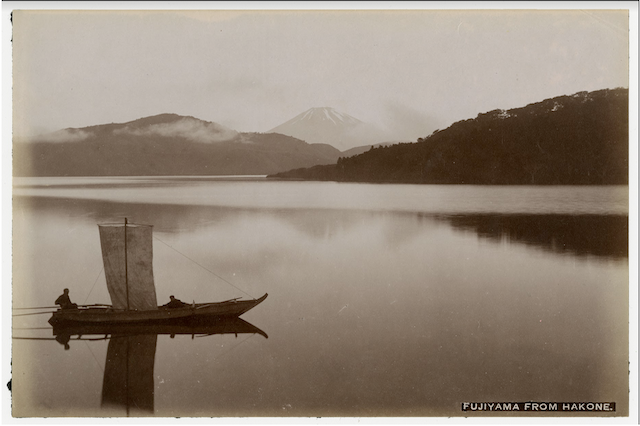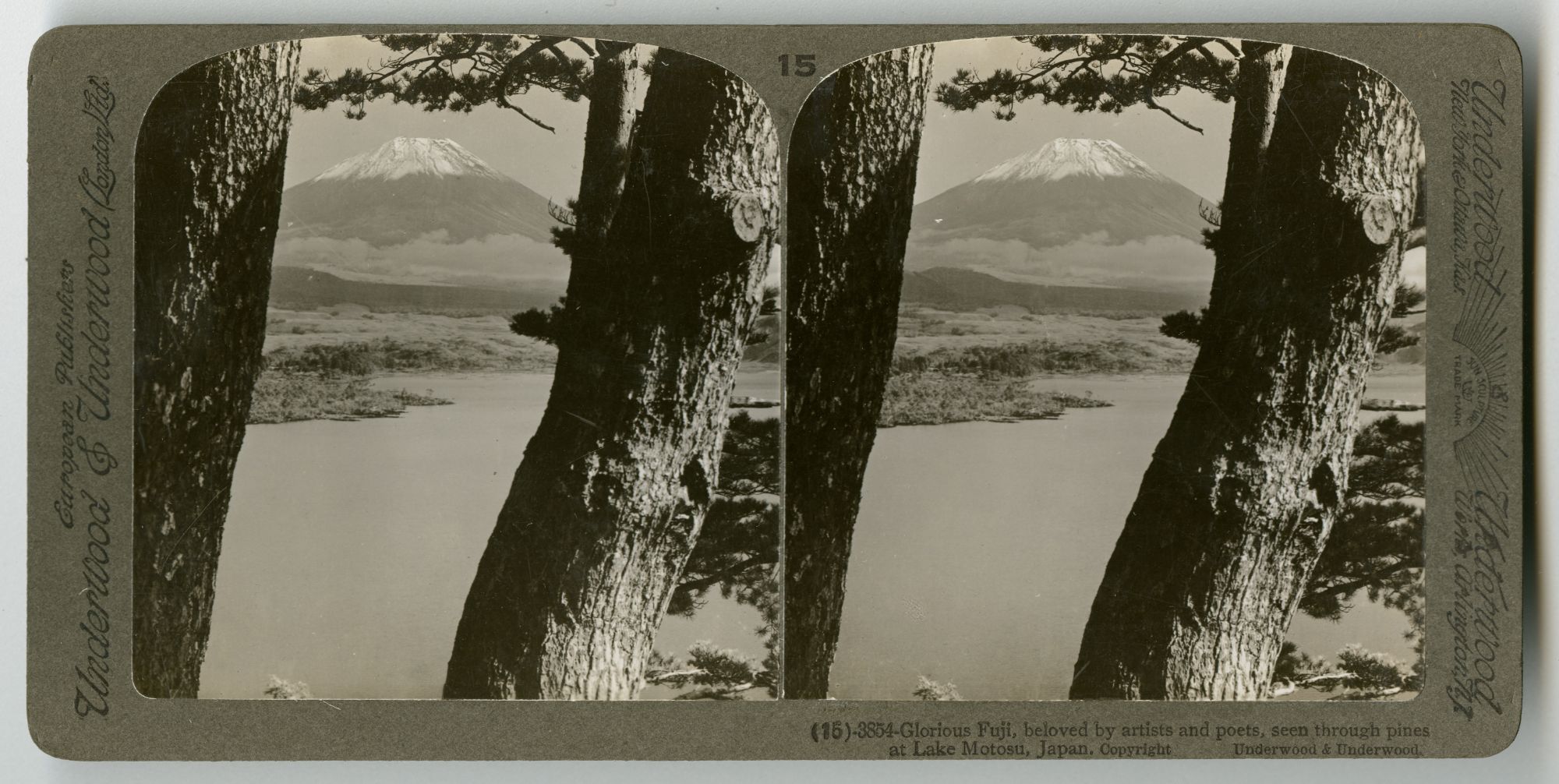
Wysteria Vine
This photograph depicts people standing on a bridge in a traditional Japanese garden. The artist used light touches of color- most evident in the wisteria hanging on the right- that give the photograph a soft, dreamlike quality. Elaborate gardens emerged as a medium in Japan in the Asuka period (538-710). Initially, Japanese gardens were heavily influenced by Chinese gardening techniques, but they developed their own style as time went on, including bridges, flowers, trees, moss, stones, and water. These gardens are a miniaturized version of the Japanese landscape and are based on principles of Shinto, Daoism, and Amida Buddhism. The model of the Japanese garden was very influential across the world and inspired many artists, including the Impressionist Claude Monet and his 1899 painting The Japanese Footbridge.

Fujiyama from Hakone
This photograph depicts a calm landscape of Mount Fujiyama. Images of Mount Fuji are commonly used in Japanese art but the most commonly known depiction of the print, The Great Wave off Kamagawa from the print series Thirty-six Views of Mt. Fuji by Katsushika Hokusai (1830 to 1832). This photograph shows a body of water that is nearly the opposite of that shown in The Great Wave. Aspects of the composition still remain the same such as the sailboat. The use of light in this work shows a peaceful and spiritual view of the water and the mountain. The image is very scenic and allows the viewer to see the sacred aspects of Mount Fujiyama.

Glorious Fuji, Beloved by Artists and Poets, Seen through Pines at Lake Motosu, Japan
Pictured is Mount Fuji as seen from behind some pine trees. The stereograph allows the viewer to feel as if they are there in Lake Motosu looking anonymously at the landscape. Imagery of Mount Fuji is very common in Japanese art and as the title of this works suggests, it was used by artists and poets for their work such as in Hiroshige’s ukiyo-e prints. They viewers twelve miles from the “Peerless Mountain” and seventy miles from Tokyo. The mountain is not just described as a beautiful landscape but also as a “supernatural, sacred thing to be regarded with awe as well as delight.”

Ando Hiroshige
Artist Ando Hiroshige, later known as Utagawa Hiroshige (1797-1858) was one of the greatest masters of ukiyo-e (Japanese woodblock prints), especially in the genre of Japanese landscape prints. He is most commonly known for this horizontal format landscape prints series, known as meisho-e or “pictures of famous places,” The Fifty-three Stations of the Tōkaidō (1833-34). He is also known for his vertical format landscape prints, One Hundred Famous Views of Edo (1856-58). Though this specific image does not appear to be a part of either of these series, the print image still keeps some stylistic similarities to other works by Hiroshige. This print depicts a woman, the mountain and a body of water in proportions that make them appear equal. There is a sense that these two elements of the print are both significant and at peace with each other. This print does not appear to be as traditional in form as some of his other works. Ejiri has characters written on the top of the print and the landscape also contains an image of a woman, the work appears to be combining two different images into one.